Continuous Non-Invasive Blood Pressure
Hypertension is among the most dangerous risk factors for
cardiovascular disease. Hypertension affects 67 million American
adults, resulting in a direct healthcare cost of approximately $50
billion. By providing data collected around the clock without
disrupting a patient’s sleep, the ViSi Mobile System with
continuous noninvasive blood pressure (cNIBP) has the potential to
help improve the diagnosis and management of hypertension,
saving lives and dollars.
Theory of Operation
ViSi Mobile cNIBP measurement is based on the relationship between blood
pressure and the time it takes a pulse that originates from a cardiac
contraction to arrive at a peripheral location. As shown in Figure 1, Pulse
Arrival Time (PAT) is measured from the time an ECG R-Wave is detected by
the Chest Sensor to its arrival at the SpO2 thumb sensor. The shorter the
time, the higher the blood pressure. The calibration of PAT for an individual
patient requires an initial NIBP cuff measurement. Once this measurement is made, continuous blood pressure is displayed based on a moving average of PAT calculations from the previous 60 seconds with display updates every 3 seconds. Accelerometers embedded in ViSi correct for posture and other hydrostatic changes.
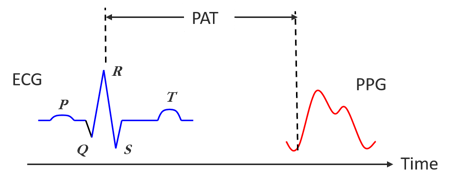
cNIBP Measurement with the ViSi Mobile System
ViSi Mobile cNIBP starts with a cuff NIBP measurement. During the inflation of the blood pressure cuff, the system establishes a calibration curve that depends on the patient’s cardiovascular profile. As the blood pressure cuff inflates, the contractility of the brachial artery is predictably altered, causing a change in PAT. After cuff removal, PAT continues to be measured and blood pressure displayed on a beat-to-beat basis without the need for additional cuff inflations.
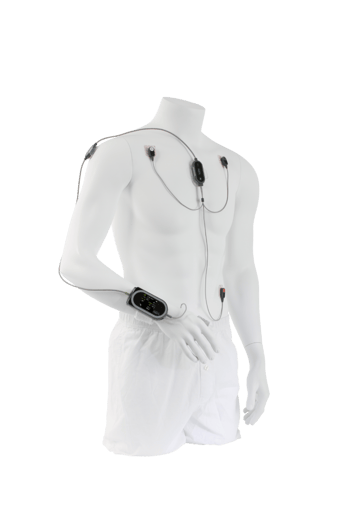
Clinical Utility
The ViSi Mobile System is designed to continuously monitor all vital signs and provide a connection between patient and
clinician, allowing for more individualized and timely care. The
system enables continuous monitoring of all vital signs with accuracy and resolution, typically found in Intensive Care Units
(ICUs). Measuring all of the vital signs on one system allows the
clinician to more easily correlate physiological events and trends enabling better patient care. Each parameter is measured in a way that provides comfort and mobility to the patient without sacrificing accuracy.
Studies point to the benefits of continuous blood pressure monitoring, but obtaining accurate continuous data often requires catheter insertion, exposing patients to discomfort and risk of infection. Sotera Wireless’s cNIBP technology maximizes comfort and safety by obtaining measurements without invasive procedures or frequent cuff inflations. Without waking patients for frequent cuff inflations, patients can get more restful sleep, leading to quicker recovery and increased patient satisfaction.

Clinical Accuracy
The cNIBP technique has been clinically compared to invasive arterial lines per ISO 81060-2: Non-invasive Sphygmomanometers – Part 2: Clinical validation of automated measurement type. This standard requires that enrolled subjects exhibit blood pressures categorized as normotensive, hypertensive and hypotensive. Table 3 below summarizes the results of the study. The cNIBP accuracy and standard deviation was calculated at varying torso positions. For torso angles of 30° or less, the accuracy of the system is ±5mmHg with a standard deviation of less than 8mmHg.
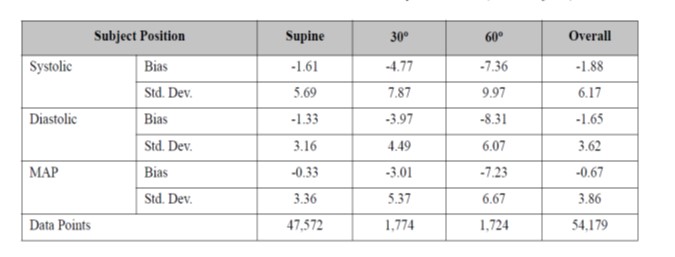
The Bland Altman plots for Systolic, Diastolic, and Mean Arterial Blood Pressure are shown in Figures 3, 4 and 5.
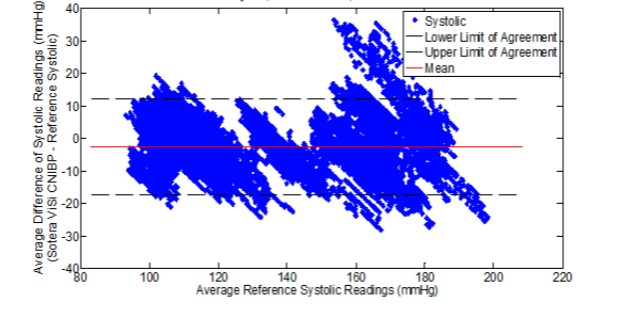
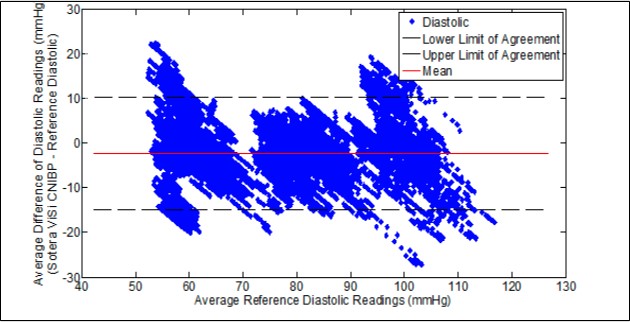
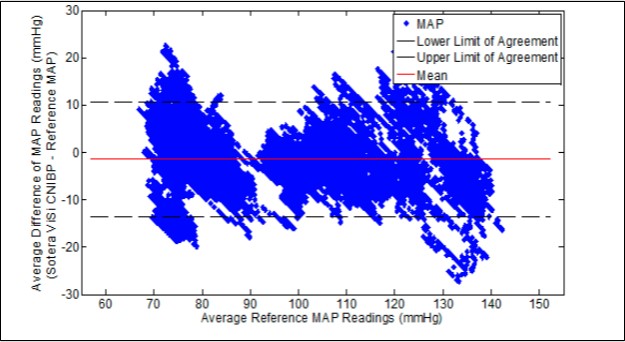
Known Limitations
There are known limitations with traditional methods of utilizing Pulse Arrival Time to calculate blood pressure. The ViSi Mobile System is designed with these limitations in mind.
- Accelerometers are utilized to correct for errors associated with hydrostatic pressure changes as well as pre-ejection period
- A patient’s unique cardiovascular profile is measured via the calibration step
- Time synced sensors create a reliable correlation between Pulse Arrival Time and blood pressure
- User is notified if significant changes in mean arterial pressure are detected
Continuous non-invasive blood pressure measurement is an emerging technology with refinements continually being incorporated into the algorithms.
